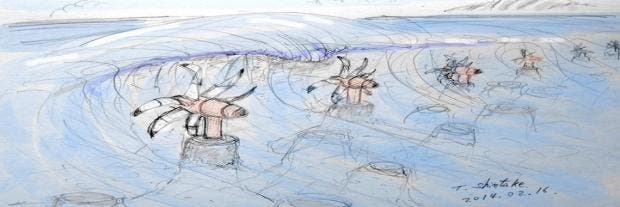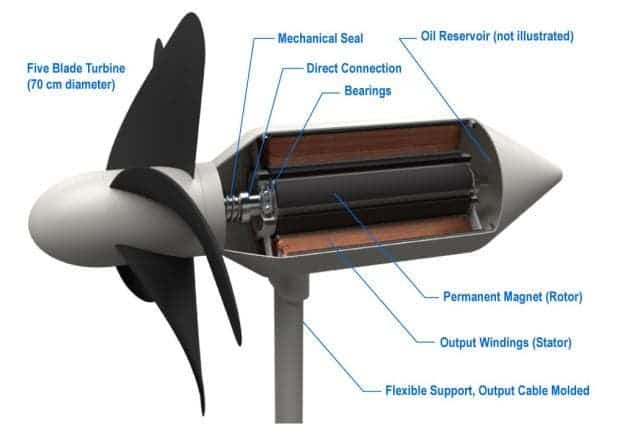The method is more efficient than wind or solar energy, the company says.

Transitioning to a carbon-free economy is not an easy task, and it will require every bit of energy we can find. Hydropower has traditionally been excellent, but it is largely tapped out. Wind and solar energy are strongly on the rise, but they come with their own shortcomings in terms of availability and capacity, and nuclear power is seemingly falling out of favor. The new kid on the block might have something to say about all that — wave energy.
Wave power is distinct from tidal power, which captures the energy of the current produced by tides. Wave-power generation is not a widely employed technology, although it has been researched since the 1980s.
In 2000, the world’s first such device was deployed in Scotland, and in 2008, the first experimental multi-generator wave farm was opened in Portugal. Now, the Japanese engineering company IHI is entering the fray.
IHI unveiled a 30-ton prototype capable of generating 100 kW of energy from rear propellers. The test is scheduled to start this fall and will last for over a year. If everything goes according to plan, the company will commercialize the product very soon.
Finding a good spot to deploy the technology is key. This test generator will feed off the Kuroshio current, a Pacific current that goes up along the Japanese coast.
“Kuroshio is one of the world’s strongest currents and a promising energy source,” said Shigeki Nagaya, IHI’s development manager overseeing the project.
The company is working with a technology called an underwater floating generator which can be placed anywhere there’s sufficient current, in both rivers or oceans. Of course, river turbines would have to be of a much smaller scale. It’s estimated Kuroshio packs about 200 GW of potential energy that can be harvested. Similar generators have been embedded in the seafloors off the coast of Scotland, among other places.
The implications are “huge,” according to lead researcher professor Tsumoru Shintake. “Using just 1% of the seashore of mainland Japan can [generate] about 10 gigawatts [of energy], which is equivalent to 10 nuclear power plants,” he said in a press release for the Okinawa Institute.
The turbines’ support structure is inspired by nature, modeled to imitate the flexibility of flowers, but also designed to withstand the extreme pressure of relentless waves and the potential tsunami. Rather than stiffly oppose them, the turbines bend like the stem of a flower bends back with the wind, Shintake says. They are anchored to the seafloor with mooring cables.

The energy won’t be cheap — at least not at first. However, as production is scaled up and the technology matures, the price will drop. IHI estimates that by 2030, the price will drop below what the average Japanese citizen pays today for electricity.
However, the operating efficiency of ocean-current power generation is estimated to be around 50-70%, significantly higher than 30-40% for offshore wind farms, or 10-15% for solar-power generators. In other words, IHI has high hopes for a market it is trying to create. “We foresee an operation worth hundreds of billions of yen,” said Nagaya. The company anticipates expansion into other areas like the U.S. East Coast or Taiwan.
There is another benefit to these turbines: they could protect against coastal erosion. In an ideal setting, the turbines would be planted among coral reefs by pyramid-shaped cement structures that will break the waves and reduce the erosion caused by the waves.
Shintake envisions a future where the technology takes off and becomes commonplace. It’s still early days, for now, but “regular” wind turbines were also early days once.
“I’m imagining the planet in 200 years,” he said. “I hope these [turbines] will be working hard quietly, and nicely, on each beach on which they have been installed.”






